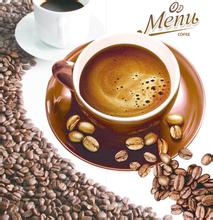Description of characteristics and flavor of Latin American coffee beans regional varieties produced by taste treatment
Description of characteristics and flavor of Latin American coffee beans regional varieties produced by taste treatment
Wild: describe coffee as having an extreme taste that reminds you of the vast grasslands of Africa.
Sweet: it is a commonly used adjective to describe coffee without sharp flavor.
Strong (strong): in popular usage, strong describes the strong flavor of deep-roasted coffee.
Tangy (Xinlie): similar to the sour taste of fermentation, the essence is almost like fruit, and it also has something to do with the taste of the wine. Coffee grown in Costa Rica usually has a pungent flavor.
Winy (wine taste): describes a charming taste reminiscent of wine, while colleagues contain fruit-like acidity and lubricating mellowness. Kenyan coffee is the best example of wine flavor.
Sour (sour): this taste can only be produced on both sides of the tongue, which is characteristic of light roasted coffee.
Briny: after brewing, if the coffee is overheated, it will produce a salty taste.
Bitter (bitterness): bitterness is a basic sense of taste, and it is also the usual taste of coffee. The bitterness of deep-roasted coffee is deliberately created, but if the coffee is particularly bitter, it may be due to the excessive use of coffee powder.
Exotic (uniqueness): describes coffee with its unique aroma and special flavor, such as flowers, fruits and spices.

While the latter is much stronger than the strong, the environmental requirements are not high, low altitude, cold resistance can even prevent their own virus, but the taste is more astringent, the caffeine content is also relatively high, twice as much as the former.
At present, most commercial coffees (such as instant) use Robbite beans, which are roasted for about eight minutes because of their low cost. All Starbucks coffee beans use Arabica beans, but the rest is not clear.
Central and South America is the largest coffee producing area in the world, and there are countless boutique coffee here. Take Colombia, Guatemala or Brazil as an example, good coffee is enough to make people dazzling. What is the resource advantage that makes Central and South America so good?
In 1721, French naval officer Gabriel Mathieu de Clieu went through difficulties and obstacles to bring the first coffee sapling from Africa to the Latin American island of Martinique, which was the origin of coffee cultivation in Latin America. Because France was under the Bourbon dynasty, Arabica coffee grown in Latin America had another name, bourbon, which is now famous in the coffee industry. Bourbon is now an important branch of coffee in Arabica. The overall flavor of Latin American coffee is famous for its balance, and all the flavors in Latin American coffee can be found in Latin American coffee. The widespread use of wet treatment of raw beans is also one of the characteristics of Latin American coffee. A good processing process also makes its beans larger and more uniform than African coffee, with a lower defect rate.
For more information about Latin American coffee beans, we recommend:
Introduction to roasting of coffee beans in Latin America
Introduction to the characteristics and flavor of Latin American coffee beans, three major coffee varieties and seven major producing areas in the world
Introduction to the characteristics of varieties for flavor description of ARICHA coffee beans
Important Notice :
前街咖啡 FrontStreet Coffee has moved to new addredd:
FrontStreet Coffee Address: 315,Donghua East Road,GuangZhou
Tel:020 38364473
- Prev

How to mix coffee beans-commercial coffee beans with Italian coffee bean formula
How to mix coffee beans-commercial coffee beans with Italian coffee beans formula in addition to good coffee beans, water quality and water temperature are the key role in releasing the aroma of coffee. It is recommended to install a filter containing activated carbon under the faucet so that you can have good water suitable for brewing coffee. The control ratio is 10 grams of ground coffee per 180 milliliters of water. No matter how much coffee is brewed, it is best to
- Next

The best time to grind coffee beans which kind of grinder has good scale thickness
The best time to grind coffee beans: which is the best time to grind coffee beans? coffee beans contain oil, so the bean grinder must be cleaned after grinding, otherwise the oil will accumulate scale, and it will smell stale after a long time, even if it is a high-grade bean. it was ground into a strange smell powder. After each use of the bean grinder, be sure to wipe the blade table with the wet market and clean the plastic top with warm hot water.
Related
- Guji coffee producing area of Guji, Ethiopia: Humbela, Shakiso, Wulaga
- What is the most expensive variety of Qiloso in BOP multi-variety group?
- How to store the coffee beans bought home?
- Why are Yemeni coffee beans so rare now?
- Ethiopian Sidamo all Red Fruit Sun Sun Santa Vini Coffee beans
- SOE is mostly sour? What does it mean? Is it a single bean? what's the difference between it and Italian blending?
- Is Italian coffee beans suitable for making hand-brewed coffee?
- How to choose coffee beans when making cold coffee? What kind of coffee beans are suitable for making cold coffee?
- Just entered the pit to make coffee, what kind of coffee beans should be chosen?
- Can only Japan buy real Blue Mountain Coffee? What are authentic Jamaican Blue Mountain coffee beans?

